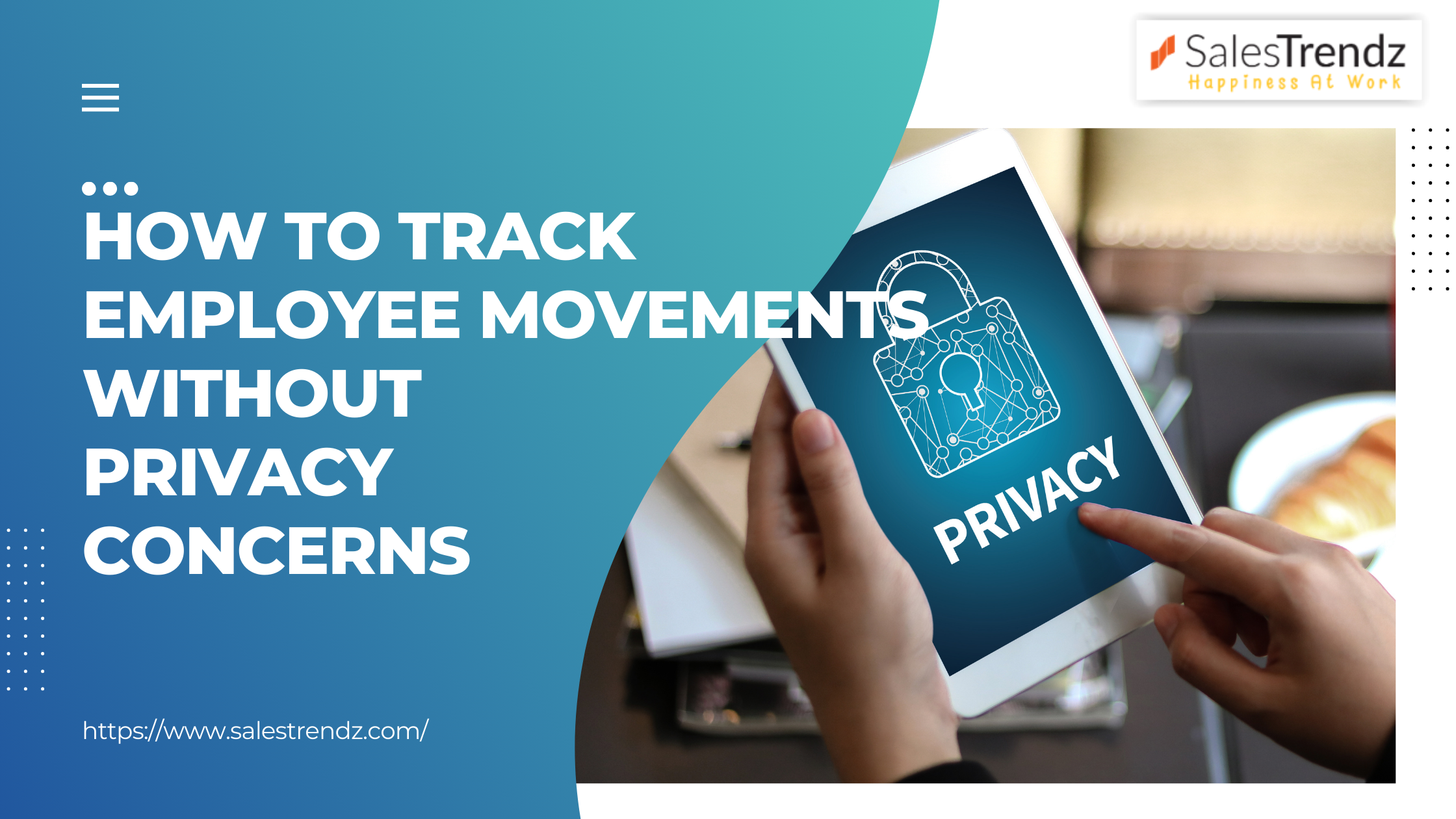How to Track Employee Movements Without Privacy Concerns

In today’s highly digitised workplace environments managing a field sales team comes with unique challenges such as ensuring that the team members are covering their territories, optimizing routes, tracking performance, and maintaining accountability—all without being intrusive or eroding trust.
However, the big question here is: Is it possible to track employee movements without violating their privacy?
The short answer is yes. With the right tools, clear communication, and a privacy-first mindset, you can efficiently monitor your field sales force while keeping their trust intact.
In this post, we’ll show you how to strike that balance—so you can gain valuable insights into your team’s operations without crossing the line.
We’ll look at the technologies available, the importance of consent and communication, and the best practices to ensure a win-win for both employers and employees.
Why Track Field Sales Personnel?
Before diving into the “how,” it’s important to address the “why.” Organizations might want to track employee movements for several reasons:
- Security: Ensuring only authorized individuals have access to sensitive areas.
- Productivity: Understanding movement patterns to identify inefficiencies or workflow bottlenecks.
- Compliance: Meeting industry or regulatory requirements for health, safety, and data handling.
- Safety: Monitoring for emergency preparedness, contact tracing (as seen during COVID-19), or lone worker support.
For companies with mobile sales teams, tracking is not just about surveillance—it’s about visibility, efficiency, and growth.
Here’s what responsible tracking can help you achieve:
✅ Optimize routes and reduce travel time
✅ Ensure coverage of assigned areas and client visits
✅ Improve customer service by reducing delays
✅ Analyze time spent on-site vs. travel time
✅ Keep your team safe during solo visits
Most importantly, tracking data helps managers make informed decisions, coach more effectively, and reward top performers. But how do you get that data without making your team feel watched?
While the intentions may be sound, the method of tracking can raise legitimate concerns. The key lies in how you implement these systems.
Core Principles for Ethical Field Tracking
Whether you’re managing 5 reps or 500, consider the following as non-negotiable principles for responsible tracking:
Transparency – Be upfront about what’s being tracked and why.
Consent – Ensure team members are informed and opt-in where applicable.
Purpose-driven – Only collect data necessary for productivity and safety.
Privacy controls – Allow “off” modes during breaks or outside work hours.
Data protection – Keep location data secure and limit who has access.
Respecting your team’s privacy isn’t just about compliance—it’s how you build a culture of trust.
Legal & Compliance Considerations
Employee tracking is governed by various laws depending on the region. For example there can be Labor laws in some regions which restrict tracking during off-hours or mandate disclosure.
There can be workplace privacy laws by different state or countries which may require employee consent or prohibit certain types of surveillance.
In India, employee tracking must comply with the Information Technology Act, 2000 and employee consent is essential. Organizations must clearly disclose tracking practices, collect only necessary data, and ensure secure handling. Monitoring should respect privacy rights under Article 21 of the Constitution, avoiding intrusive or non-work-related surveillance.
Hence, as a proactive measure it is best is to always consult with legal counsel before deploying tracking technology, especially across different regions. It protects both your company and your employees.
How to Introduce Tracking to Your Sales Team (Without Backlash)
You might have the best tool in the world—but if you don’t communicate it appropriately , it can backfire. Here’s how to bring your team on board:
✅ Explain the ‘Why’
Frame it around benefits: better support, less admin work, smarter routing—not surveillance.
✅ Make It Two-Way
Ask for feedback. Involve your team in selecting or customizing the tools.
✅ Set Boundaries
Clarify when tracking is active (e.g., 9 to 5), and make it clear it won’t be used to micromanage.
✅ Be Transparent About Access
Who sees the data? What’s it used for? Being clear builds trust. You calso provide clear documentation.
✅ Focus on Performance, Not Policing
Use tracking to celebrate wins, not punish misses. You can also consider to Offer Opt-Out Where Possible such as an off-switch during breaks—goes a long way toward reducing privacy concerns.
Perhaps the most overlooked part of implementing a tracking system is how it’s communicated. Employees who feel spied on or kept in the dark are likely to resist or resent the initiative.
Some Examples
Let’s look at a few examples of companies that successfully implemented tracking with minimal privacy concerns:
- A logistics company used geo-fencing to automatically log time sheets for drivers, reducing manual input. The system activated only during work hours and with prior employee consent.
- A growing beverage distribution company had 30 sales reps in the field. They introduced geo-fencing around retail partner locations and enabled mobile check-ins via CRM. The result?
Route efficiency improved by 25%
Client visit compliance rose by 40%
Reps saved 4+ hours per week on admin work
And—no complaints about privacy. Why? Because the rollout was transparent, respectful, and focused on helping reps do their jobs better.
Conclusion
In today’s mobile-first sales environment, tracking doesn’t have to mean spying. With smart tools and a people-first approach, you can unlock powerful insights, improve efficiency, and support your team—all without compromising privacy.
Here’s a quick checklist to get started:
- Define your tracking goals (efficiency? accountability? safety?)
- Choose tools designed for field teams with opt-in controls
- Communicate clearly and invite feedback
- Stay compliant with regional laws
- Use data to empower, not control
Your sales reps are the face of your brand. Track them like you trust them—and they’ll perform like you wouldn’t believe.
Need help picking the right tool for your team? Or want a sample policy you can share with your reps?
Let us know in the comments or get in touch—we’re here to help you finding the right tools or creating a privacy-first tracking policy?


